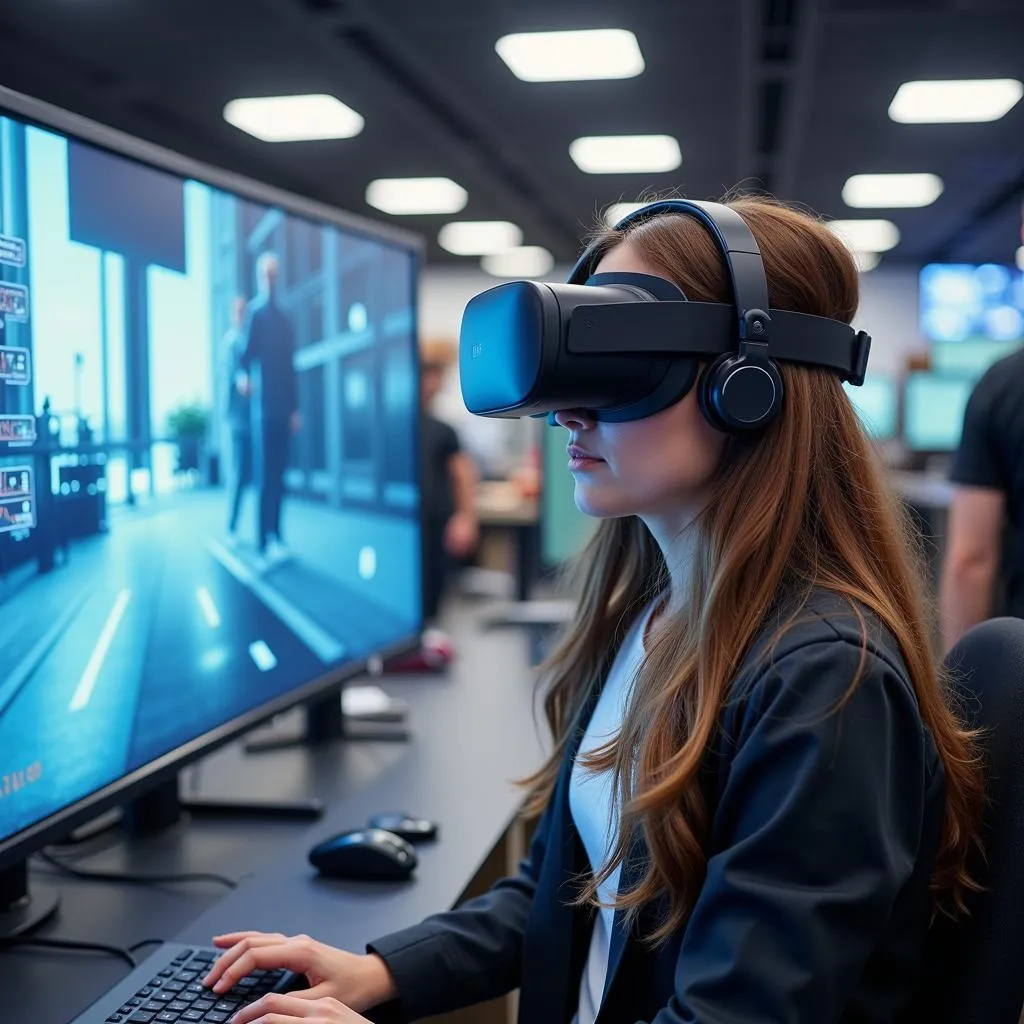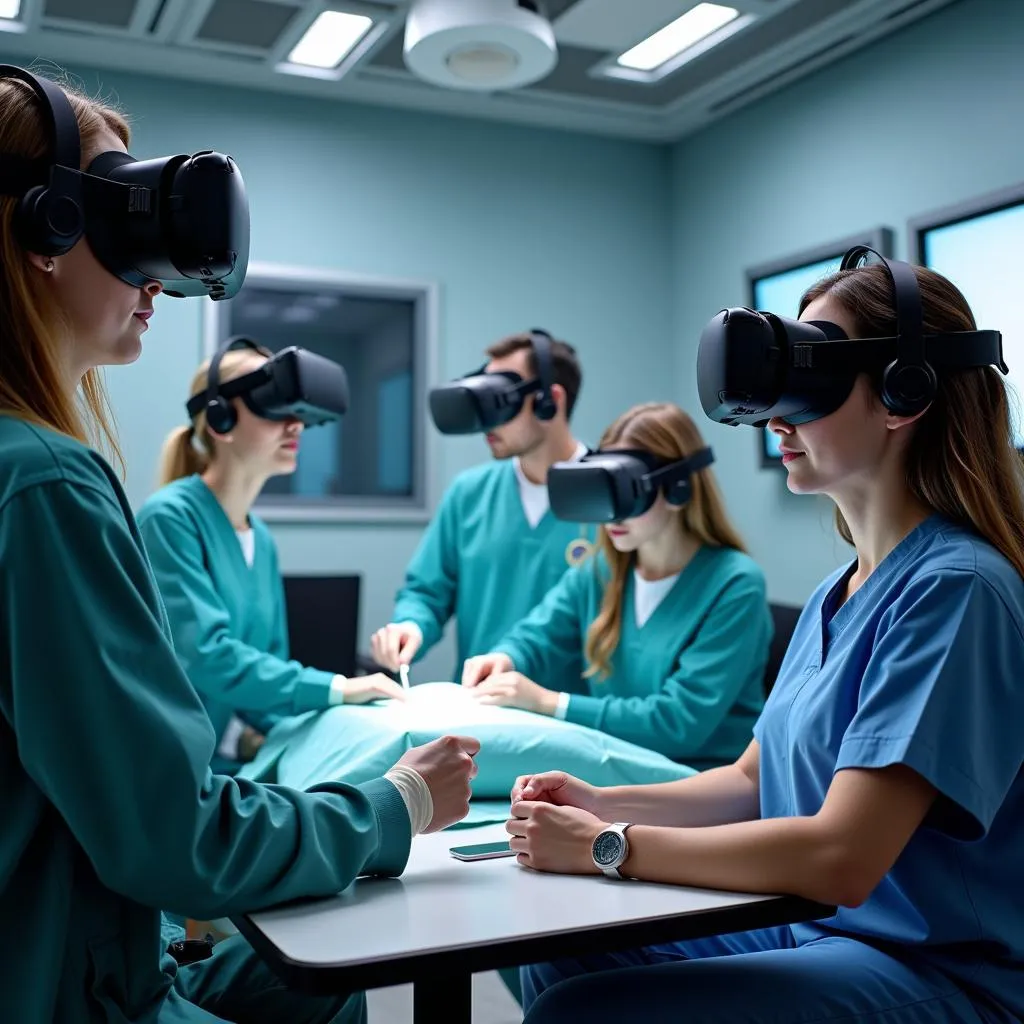Virtual reality (VR) has revolutionized the way we experience digital content, transporting us to immersive worlds and captivating simulations. One of the key techniques behind creating these seamless and visually stunning experiences is the use of pre-rendered frames. This article delves into the realm of virtual reality pre-rendered frames, exploring their significance, benefits, and applications in shaping the future of immersive technology.
 Virtual Reality Pre-Rendered Frames Concept
Virtual Reality Pre-Rendered Frames Concept
Understanding Pre-Rendering in VR
In the context of VR, pre-rendering refers to the process of generating images or frames of a virtual environment before the user actually experiences it in real time. These pre-rendered frames are essentially high-quality snapshots of the virtual world from different viewpoints. When a user navigates through the VR environment, the system rapidly displays these pre-calculated frames in a specific sequence, creating the illusion of smooth motion and interaction.
Pre-rendering plays a crucial role in delivering high-fidelity VR experiences, especially on devices with limited processing power. By shifting the computationally intensive task of rendering complex scenes to an offline process, pre-rendered frames enable VR applications to achieve smoother frame rates, higher resolutions, and more detailed environments.
Advantages of Using Pre-Rendered Frames in VR
The utilization of pre-rendered frames in VR offers a multitude of advantages:
- Enhanced Visual Fidelity: Pre-rendering allows developers to incorporate intricate details, realistic lighting effects, and complex textures into VR environments, resulting in visually stunning experiences that surpass the capabilities of real-time rendering on certain devices.
- Smoother Performance: By eliminating the need for real-time rendering during user interaction, pre-rendered frames ensure a more fluid and responsive VR experience, minimizing latency and motion sickness.
- Accessibility on a Wider Range of Devices: Pre-rendered VR content can be enjoyed on devices with varying levels of processing power, making VR experiences more accessible to a broader audience.
- Reduced Development Time and Costs: While pre-rendering requires an initial investment of time and resources, it can potentially streamline the development process by allowing developers to focus on other aspects of the VR experience.
Applications of Virtual Reality Pre-Rendered Frames
The versatility of pre-rendered frames has led to their adoption across various VR applications:
- Virtual Tours and Architectural Visualization: Pre-rendered frames enable the creation of highly realistic and immersive virtual tours, allowing users to explore real estate properties, museums, or travel destinations from the comfort of their own homes.
- Training and Simulation: Industries such as healthcare, aviation, and manufacturing utilize pre-rendered VR simulations for training purposes. These simulations provide a safe and controlled environment for practicing procedures, operating machinery, and handling complex scenarios.
- Entertainment and Gaming: Pre-rendered frames have been instrumental in developing cinematic VR experiences, interactive stories, and visually stunning games, enhancing the level of immersion and engagement for users.
 VR Training Simulation Using Pre-Rendered Frames
VR Training Simulation Using Pre-Rendered Frames
Limitations of Pre-Rendered VR
Despite its numerous benefits, pre-rendered VR also has limitations:
- Limited Interactivity: Pre-rendered frames inherently restrict the level of user interaction within the VR environment. Since the frames are pre-calculated, users may not be able to freely interact with all elements or make significant changes to the virtual world.
- Large File Sizes: Pre-rendered VR experiences often result in larger file sizes due to the high-quality images and data required. This can pose challenges for storage and distribution, particularly for mobile VR applications.
- Challenges with Dynamic Content: Integrating dynamic elements, such as moving characters or real-time physics, into a pre-rendered VR environment can be complex and may require hybrid approaches combining pre-rendering with real-time rendering techniques.
The Future of Virtual Reality Pre-Rendered Frames
The field of VR is constantly evolving, and so are the techniques used to create immersive experiences. Advancements in rendering technologies, such as real-time ray tracing and cloud computing, are blurring the lines between pre-rendered and real-time VR.
As technology continues to advance, we can anticipate hybrid approaches that leverage the strengths of both pre-rendering and real-time rendering to deliver even more realistic, interactive, and accessible VR experiences.
Conclusion
Virtual reality pre-rendered frames play a pivotal role in shaping the landscape of immersive technology. By enabling high-fidelity visuals, smooth performance, and accessibility on a wider range of devices, pre-rendering empowers developers to create captivating VR experiences across various industries.
While challenges remain in terms of interactivity, file sizes, and dynamic content integration, the ongoing advancements in rendering technologies promise a future where the boundaries between pre-rendered and real-time VR continue to blur, paving the way for even more immersive and engaging virtual worlds.





